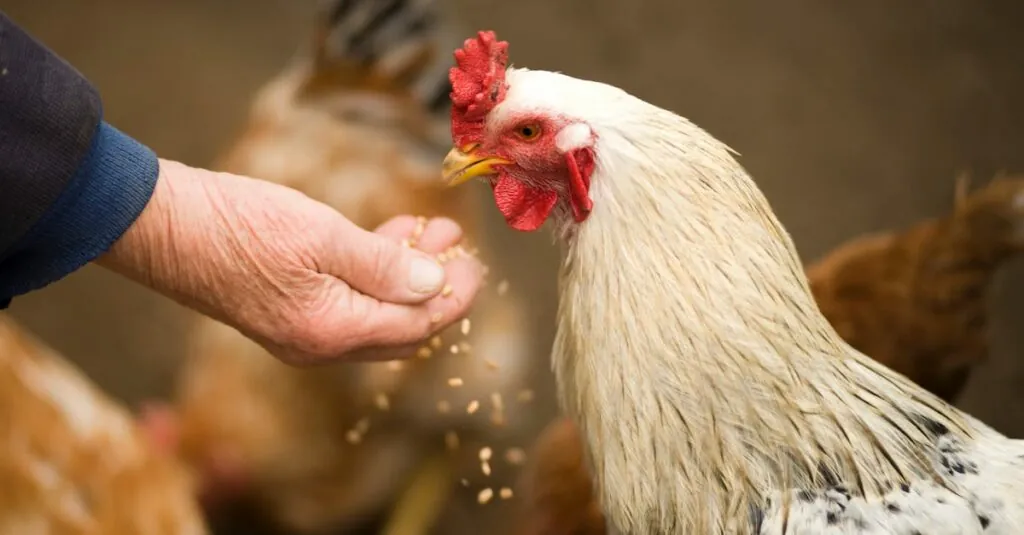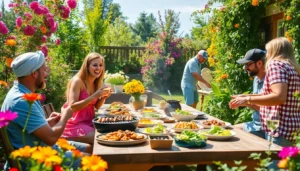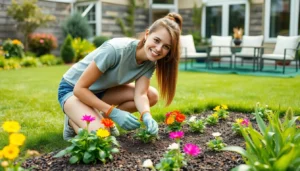Table of Contents
ToggleImagine waking up to the sound of birds chirping, the sun shining, and knowing you’re living in harmony with nature. Self-sustainable living isn’t just a trend; it’s a lifestyle choice that lets anyone become the ultimate eco-warrior in their own backyard. Picture growing your own veggies, harvesting rainwater, and saying goodbye to those pesky grocery bills. Who knew saving the planet could also save some serious cash?
But wait, there’s more! Embracing self-sustainability means less reliance on big corporations and more time spent enjoying life. It’s about creating a cozy haven where you can sip your homemade herbal tea while watching the world go by. So buckle up, because diving into the world of self-sustainable living might just be the best decision you’ll ever make—unless you count that time you tried to bake bread and ended up with a rock.
Understanding Self Sustainable Living
Self-sustainable living embodies a lifestyle that harmonizes human activity with the natural world. This approach enables individuals to minimize their ecological footprint while enhancing personal well-being.
Definition and Principles
Self-sustainable living refers to the practice of meeting one’s needs without depleting resources or causing environmental harm. Central principles include reducing waste, utilizing renewable energy sources, and fostering biodiversity. Individuals engage in practices that support local ecosystems, such as composting organic materials and creating wildlife habitats. This lifestyle choice cultivates self-reliance and promotes a deep connection with nature. Adopting sustainable techniques empowers individuals to produce their own food and manage resources efficiently.
Benefits of Self Sustainable Living
The advantages of self-sustainable living include cost savings, improved health, and reduced environmental impact. Growing food organically not only cuts grocery bills but also ensures access to fresh and nutritious produce. Utilizing rainwater harvesting systems significantly decreases dependency on municipal water supplies. Additionally, relying on renewable energy sources, such as solar panels, further reduces utility costs. Engaging in self-sustainability fosters a sense of fulfillment and enhances overall quality of life. Individuals experience personal enrichment through meaningful connections with their surroundings.
Key Practices for Self Sustainable Living
Practicing self-sustainable living involves implementing effective strategies to promote environmental health and personal well-being. Key practices include energy efficiency and water conservation.
Energy Efficiency
Energy efficiency plays a crucial role in self-sustainable living. Utilizing energy-efficient appliances significantly lowers electricity consumption. Opting for LED lighting reduces energy use while providing sufficient illumination. Implementing smart home technology enhances control over energy usage, enabling better monitoring. Utilizing passive solar designs maximizes natural heating and lighting, decreasing reliance on non-renewable sources. Incorporating renewable energy installations, such as solar panels or wind turbines, contributes to long-term sustainability and cost savings. Transitioning to these practices not only conserves energy but also lowers monthly utility bills and enhances overall quality of life.
Water Conservation
Water conservation represents a vital aspect of self-sustainable living. Collecting rainwater through a simple rooftop system provides a free source of irrigation for gardens. Installing low-flow fixtures minimizes water usage without sacrificing comfort. Implementing greywater recycling systems repurposes water from sinks and showers for non-potable uses. Establishing drought-resistant landscaping reduces the need for excessive watering, promoting biodiversity. Practicing these methods leads to significant reductions in water usage and helps to protect local ecosystems. Adopting these water conservation techniques fosters a more sustainable lifestyle while ensuring access to this precious resource.
Growing Your Own Food
Growing food at home reduces reliance on store-bought produce, enhances dietary quality, and fosters a deeper connection with nature. Utilizing specific techniques and principles ensures successful cultivation.
Organic Gardening Techniques
Organic gardening emphasizes natural growth without synthetic fertilizers or pesticides. Composting serves as a fundamental practice, enriching soil with nutrients. Regular crop rotation prevents nutrient depletion and pest infestations. It’s crucial to plan garden layouts effectively. Raised beds facilitate better drainage and soil quality. Companion planting involves grouping plants to enhance growth and deter pests. For example, planting marigolds alongside vegetables repels harmful insects. Careful selection of heirloom seeds promotes biodiversity and resilience.
Permaculture Principles
Permaculture focuses on creating sustainable agricultural systems by mimicking natural ecosystems. Key designs emphasize efficient resource use and waste reduction. Zones categorize different elements for optimal energy consumption. For instance, placing frequently used elements close to living spaces enhances accessibility. Incorporating perennial plants improves soil health and reduces maintenance efforts. Water conservation techniques, including swales and rain gardens, support water retention and mitigate runoff. Integrating animals within agricultural systems fosters symbiosis, where livestock provide manure for fertilization. Balancing all components promotes a thriving environment and sustains food production.
Waste Reduction Strategies
Waste reduction significantly contributes to self-sustainable living. It minimizes environmental impact while promoting resource efficiency. Two effective strategies include composting and recycling/upcycling.
Composting Methods
Composting transforms organic waste into nutrient-rich soil. Many methods exist for composting. The heap method involves piling organic materials, turning it occasionally to aerate. Bokashi composting uses anaerobic fermentation for kitchen scraps. Vermicomposting invites red worms to digest waste, producing rich fertilizer in a compact setup. Each method caters to specific needs and available space, making composting versatile for any household. Regularly adding kitchen waste and yard clippings encourages a successful composting process, enhancing gardens and supporting plant growth.
Recycling and Upcycling
Recycling and upcycling cultivate resourcefulness in self-sustainable living. Recycling effectively reprocesses materials into new products. Common items include paper, glass, plastics, and metals. Each community often offers specific guidelines, highlighting what can be recycled. Upcycling creatively transforms unwanted items into usable products, reducing waste and saving money. Examples of upcycling include turning glass jars into storage containers or repurposing old furniture. Engaging in these practices supports waste reduction and fosters a culture of sustainability, allowing individuals to contribute to a healthier environment.
Community Involvement
Community involvement plays a crucial role in self-sustainable living. Engaging with others creates a platform for sharing knowledge, resources, and support.
Building a Supportive Network
Creating a supportive network fosters collaboration among like-minded individuals. Connecting with local gardeners encourages sharing tips, seeds, and produce. Participating in workshops cultivates skills and expands knowledge about sustainable practices. Joining community groups promotes resource exchange, such as tools and materials. Collaborative projects, like community gardens, enable sharing of labor and culminate in collective harvests. Networking strengthens ties and inspires motivation, enhancing individuals’ ability to pursue self-sustainable living.
Local Initiatives and Resources
Local initiatives provide valuable resources for self-sustainable living. Farmers’ markets offer access to fresh produce and promote local agriculture. Community composting programs facilitate waste reduction and nutrient cycling. Educational workshops on permaculture principles enhance understanding of sustainable practices. Resource centers often provide free or low-cost materials for gardening and conservation efforts. Joining social media groups dedicated to sustainability connects individuals with local events and opportunities. These initiatives empower individuals to implement sustainable practices while connecting with their community.
Embracing self-sustainable living offers a pathway to a more fulfilling and environmentally friendly lifestyle. It encourages individuals to reconnect with nature while fostering independence from conventional systems. By adopting practices like organic gardening, rainwater harvesting, and waste reduction, one can significantly enhance their quality of life.
This lifestyle not only leads to financial savings but also contributes to personal well-being and community resilience. Engaging with local initiatives and sharing knowledge with others creates a supportive atmosphere that nurtures growth and sustainability. Ultimately, self-sustainable living represents a commitment to a healthier planet and a more satisfying way of life.







